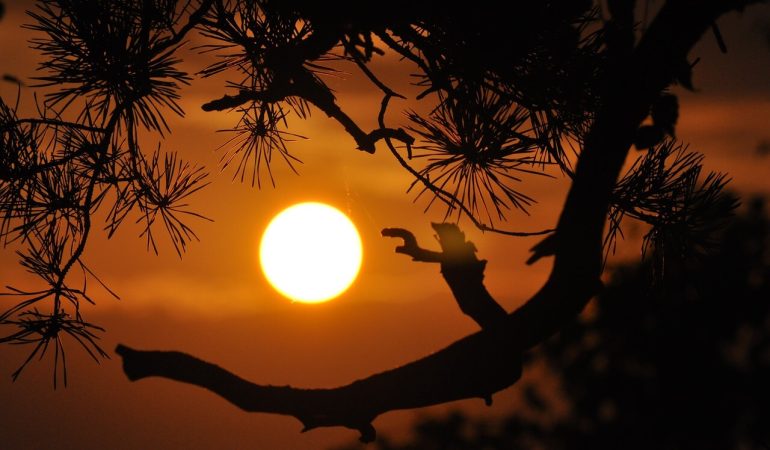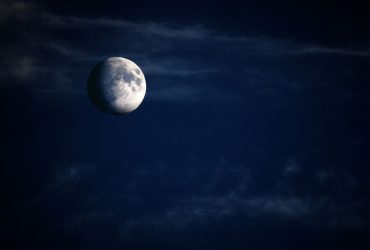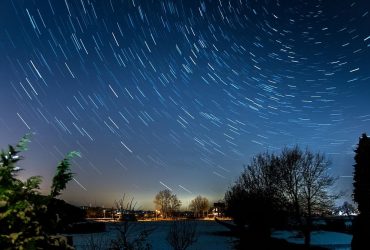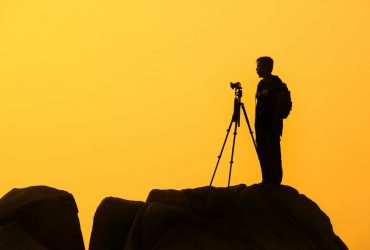What Happens When You Point A Telescope At The Sun?
Never ever look at the sun through a telescope. The sheer amount of light intensity the telescope concentrates on the eyepiece will literally burn your eye.
That said, there are a couple of safe ways to observe the sun without going blind.
Below, we explain why the sun is the one star you don’t want to observe with your telescope plus what you need to look at the sun safely with your telescope.
What Happens When You Point A Telescope At The Sun
The video below demonstrates better than words what would happen if you looked at the sun through a telescope without any protection at all. Note that the video involves a pig’s eye; skip it if that makes you squeamish.
When you point your telescope at the night sky, it collects as much light as possible so you can see the moon, planets or stars.
This is a good thing — you want as much light as possible to get into the objective lens or mirror. That’s why large aperture telescopes are great for astronomy; they collect lots of light.
It already hurts to look at the sun with your naked eyes and could easily damage your eyes. Now imagine pointing a telescope at the sun and looking through the eyepiece.
A telescope is designed to concentrate light through a series of lenses or mirrors (or both as is the case in catadioptric telescopes).
When you point it at the sun, it takes in the already intense amount of light and concentrates it through the lenses and onto the eyepiece. The result is a stupendous amount of light focused on the eyepiece, enough to blind you.
The same way a magnifying glass can burn a paper or grass, the extremely intense light coming through the eyepiece can burn your eye. In the process, it will also melt the eyepiece as you can see in the video below.
By the way, this applies to all kinds of optical devices including binoculars, monoculars, riflescopes or night vision. Never use any of them to look at the sun.
Can You Damage A Telescope By Pointing It At The Sun?
If you look at the sun through a telescope, the biggest damage will be to your eye. The second biggest damage is to the eyepiece.
That’s because the eyepiece receives the highest intensity of light compared to other components in the telescope. This quickly raises temperature and can easily melt the eyepiece.
What about the mirrors and lenses in the telescope?
Telescope mirrors reflect most of the light that falls on them while lenses let most of the light through. However, the intensity of light from the sun is enough to cause them to heat up.
The biggest risk is usually not to the optics themselves, but the surrounding components like the plastic and glue holding them in place.
But the intense heat can also cause direct damage on the mirrors and lenses.
So even if you are not planning to put your eye against the eyepiece to look at the sun, simply pointing the telescope at the sun can damage it.
How To Safely Observe The Sun With A Telescope
There are two ways to safely point a telescope at the sun without blinding yourself: directly and indirectly.
Directly Using A Solar Filter
A solar filter blocks over 99% of light coming from the sun, making it safe to observe the sun directly through a telescope.
Make sure you get a filter that’s made specifically for telescopes. Solar filters for cameras do not block as much light as telescope solar filters, so you could still get injured.
Also, check that the filter you buy can fit your telescope size. Most filters are designed to fit a range of telescope sizes.
You can also make a DIY solar filter. It’s a lot cheaper compared to buying a telescope filter. You’ll need to buy a sheet of solar film (also called white film). Here’s a video of a DIY solar filter for a telescope.
When using a solar filter, there are some steps to follow.
- Do not point the telescope at the sun until you are ready to. Point the telescope as far away from the sun as possible to avoid any accidents. In addition, keep the lens cap on until you are ready to start.
- Remove the finder scope from your telescope or cap it on both ends. Looking at the sun through the scope is just as dangerous as looking at it through the eyepiece.
- Before attaching the solar filter to the telescope, hold it against the sun and look through it. Check if there is any leakage coming through the filter. If there is even a tiny pinprick of light coming through, do not use that filter as it can injure you.
- If the filter is good, attach it to the telescope. Also attach the eyepiece.
- Use the shadow of the telescope to align it to the sun (remember you cannot use the finder scope). You can now safely observe sunspots, solar eclipses, solar flares and other solar phenomena.
- When you are done, remember to point the telescope away from the sun before you remove the filter.
Note: You may come across solar filters designed for eyepieces. Never use eyepiece solar filters. A dangerous amount of light will still be entering the telescope. Any leakage in the filter will be disastrous. Also, you’ll still be subjecting the telescope to too much heat.
Indirectly Using the Solar Projection Method
The second, and safest, method is using solar projection. This doesn’t require you to look into the eyepiece and you can do it without using a solar filter.
With the solar projection method, you set up the telescope as normal and point it towards the sun. Do not look into the eyepiece.
Then hold a white sheet of paper in front of the eyepiece. The eyepiece will project an image of the sun onto the paper. You can easily see the dark sunspots.
Word of warning: Because this method doesn’t use a solar filter, there is a risk of damage to the telescope. We recommend using an old and cheap telescope you don’t mind damaging. A small aperture telescope (3 in or less) is also safer since it doesn’t let in as much light as a large telescope.
Can You Use A Telescope During The Day?
While we are on the topic of looking at the sun with a telescope, you might be wondering if it’s safe at all to use a telescope during the day.
Obviously, other than the sun, you won’t be able to see much in the daytime sky. If you want to look at the stars during the day, do so at dusk or dawn when the sun’s light is not strong enough to wash out everything else in the sky.
You can still see some bright stars when the sun is fully shining, but they will be very faint. You have to be extremely careful not to accidentally point the telescope at the sun. We recommend timing for when the sun is low on one side of the sky, so you can safely point away from it.
Other objects you can see during the day with a telescope include the moon and some planets. As with stars, they will be faint and washed out.
You can also use a telescope for terrestrial observations. That is, observing objects and features around you like trees, mountains or buildings.
Some telescopes will show an upside-down image, which can be corrected using a star diagonal.



